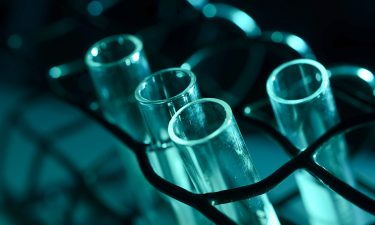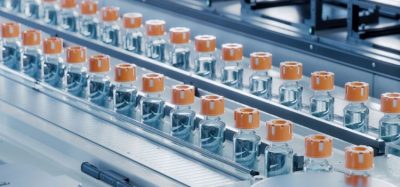Analytical method transfer and the supplier change processes for bacterial endotoxin testing
Posted: 20 November 2019 | Kerry Skinner (Bio Products Laboratory), Tim Sandle (Bio Products Laboratory) | 1 comment
Changes to lab setups become necessary for many reasons, but the important role of quality control should remain consistently accurate. Tim Sandle and Kerry Skinner describe the details to consider when transferring an analytical method between laboratories or when changing your reagent supplier.


Introduction
Sterile drug products are not only at risk from viable microorganisms; microbial toxins can also pose a significant risk to patients, particularly if toxins are injected into the blood stream. While there is a range of microbial toxins (exotoxins, enterotoxins and endotoxins) with different immunological effects, the most important for pharmaceutical product consideration are endotoxins, due to their association with water.
Bacterial endotoxins cause a pyrogenic response when injected into the human bloodstream at sufficient concentration. There are various ways to test products for pyrogens, specifically endotoxin, and the foremost method remains the Limulus Amebocyte Lysate (LAL) test.1
LAL testing is an established part of many quality control (QC) microbiology laboratories and is subject to similar test protocols and assay requirements as other analytical methods, albeit with the wider acceptance criterion that reflects the test’s status as a biological assay. With such laboratory methods there may be occasions when a lab will need to transfer an existing method from one laboratory to another, or where the core reagent needs to be changed; both scenarios require reassessment of previously assessed samples. This article, in considering analytical method changes, uses the LAL test (specifically, a photometric test method) as an example of how a method can be transferred.
A key objective with any method transfer or change is ensuring that product and process knowledge remains intact. Challenges can arise from poor analytical method robustness; where differences in analytical technology have not been properly considered due to different working cultures, differences in working methodology between laboratories or alterations that are required as a result.2 Such issues become more likely when a method is transferred but problems can also arise when a reagent changes, especially where the replacement reagent is inferior. It is important in both scenarios to properly plan the change process.
Technology transfer of laboratory methods
Analytical method transfer is a documented process that either qualifies a (receiving) laboratory to use an analytical method that originated in another (transferring) laboratory or refers to the transfer of a specific method from one laboratory to another, or to the change of method from one supplier to another, which may or may not involve a modification of test methodology. Similarly, there are different forms of transfer. They include comparative testing, which refers to analysis conducted on samples from the same lot of product against both test methods applying the same acceptance criteria (together with any acceptable variability) and any revalidation or partial revalidation that is undertaken (or, in the context of many pharmacopeia tests, re-running the full scope of ‘method suitability testing’). A related situation concerns the change of a reagent, which can happen with a change of supplier. The argument made in this article is that with the LAL test, comparative testing is acceptable under both scenarios.
The change of reagent or transfer process must be covered by a test protocol, which must be approved prior to the transfer process, to execute the work under change control. It is important to detail the personnel responsibilities involved with the technology transfer process. This includes who will be responsible for the analytical method transfer and who will be executing the method development aspects.
As part of the process, it is good practice to assess the following:
- Map out the method transfer process flow or reagent change steps for the method in advance. This enables bottlenecks and areas of concern to be determined and mitigations considered
- Establish any differences in instrumentation in the context of the analytical method
- Establish any variations in the levels of equipment maintenance and standards of instrument qualification
- Verify that all equipment required to perform the method testing is available
- Ensure that all equipment is qualified and properly calibrated
- Check that reference standards are available
- Assess whether the required test samples are available
- Ensure that a test protocol is in place along with any applicable standard operating procedures (SOPs)
- Assess whether analysts are appropriately trained in the methods to be conducted
- Run through procedure(s), methods and document(s) received and identify any issues prior to executing the test protocol.
It is imperative to verify that conditions have not changed and to seek objective evidence that requirements of the change process have been fulfilled.
Bacterial endotoxin and an overview of the endotoxin test method
Gram-negative bacteria possess a cell envelope, which is a loosely attached layer of material called lipopolysaccharide located outside a thin structural layer of peptidoglycan. The outer layer of this lipopolysaccharide envelope is a permeability barrier effective against diffusion of exo-enzymes into the external environment. This is an evolutionary feature that has arisen to allow Gram‑negative bacteria to survive and increase in number in environments such as water.3


The LAL test is a method designed to meet the requirements of the Bacterial Endotoxin Test (BET) for detecting the presence – and to a degree, determining the level – of Gram-negative bacterial endotoxins in a given sample or substance. Current editions of the pharmacopoeia carry statements to the effect that where the term apyrogenic or pyrogen-free is used it should be interpreted as meaning that samples of the product will comply with a limit for bacterial endotoxin.5 Building on the gel-clot test, which was the original LAL test method (first appearing in compendia in 1985), the two most common methods for endotoxin assessment are the turbidimetric and chromogenic assays (described as the kinetic methods because the rate of reaction is proportionate to the amount of endotoxin present).
Other methods have also been developed, such as ELISA- (enzyme-linked immunosorbent assay) based methods. With these methods, endotoxin is bound to a phage protein and detected by recombinant Factor C (rFC) and quantified through the detection of a fluorescence substrate. These assays are well established, although there are recent complications around the subject of low endotoxin recovery (LER).6 Although LER is important, it is not addressed here, as it is not (as yet) a requirement of established compendia.
The focus of this article is with the more established kinetic methods – principally, the turbidimetric method. With these methods, the test sensitivity is determined by the lowest point of the standard curve used with each assay7 and the required changes in turbidity and colour are discernible by spectrophotometers. The unit of measurement for the LAL test is the endotoxin unit (EU), expressed as EU per mL or m, which is a measure of endotoxin activity.
Method reassessment
Two concerns with using the LAL test are the presence of interfering factors, which can lead to inhibition or enhancement of endotoxin, and the over-dilution of samples so that a false negative is obtained, underestimating the quantity of endotoxin present in the sample. These risks are detected through, in case of interfering factors, the use of positive sample (or product) controls, where samples are challenged with a known quantity of endotoxin and the recovery calculated; and with avoiding over-dilution through the use of a formula to calculate the maximum valid dilution (MVD).8 Interference can either be enhancement or inhibition.
The change of reagent or transfer process must be covered by a test protocol, which must be approved prior to the transfer process”
Such interference may be caused by several different factors such as pH, protein concentration and presence of chemicals (such as NaOH from rinsing cycles, etc). Interference may affect the performance of the lysate or the ability to recover endotoxin. Inhibition or enhancement are normally detected using spiked controls, but inhibition is arguably the greatest concern because it can result in failure to detect the true level of endotoxin in a sample. Establishing that interference is not present is fundamental to the test; thus this becomes a key criterion when a method is transferred or where a new reagent is adopted.
Tests are additionally run against a standard series of expected endotoxin concentrations and negative controls. Negative controls consist of samples of LAL reagent water containing no detectable endotoxin to which LAL reagent is added. Their purpose is to assure that the test system does not give a signal in the absence of endotoxin and to verify that the reagents are not contaminated.9 LAL tests use an endotoxin control to construct a standard curve, against which sample and endotoxin challenge reactions are compared and the level of endotoxin estimated as a value reported as an EU. The endotoxin used is either a reference standard (RSE) or control standard (CSE) endotoxin preparation purchased from lysate manufacturers and other third-party vendors.
As a compendial method, the LAL test is not ‘validated’, but rather samples are assessed in terms of ‘method suitability’, using a full-dilution range. With a change of reagents or transfer between laboratories, full-dilution range testing is not necessary; however, it is important to undertake comparative testing in order to verify that samples can be tested at previously assessed test dilutions and that the standard curves against which samples are to be run can meet the appropriate test criteria.
Reassessment of established methods
Two steps are required when a method is transferred or where a new reagent is adopted: reassessment of the ability of the laboratory to construct a satisfactory standard curve (in terms of repeatability and reproducibility) and reassessment of the suitability of the method, in terms of assaying the samples at an appropriate dilution without assay interference occurring.
Assessment of repeatability and robustness
Different terms are adopted for when key performance criteria of assays are assessed. The term repeatability expresses precision under the same operating conditions over a short interval of time (sometimes intra-assay precision is used as an alternative phrase). The term intermediate precision describes within-laboratories variations, such as testing on different days and with different analysts. Where a method is being transferred between laboratories, reproducibility must be accounted for. This term expresses the precision between laboratories (collaborative studies usually applied to standardisation of methodology).


Reassessment of product
Each product or sample will have been assigned an endotoxin limit. This is either derived from compendia or assessed on the basis of risk. The objective is to test the product at a dilution that enables this limit to be reliably reported and that is at a dilution within the maximum valid dilution (MVD). The MVD determines how much the product can be diluted and still be able to detect the endotoxin limit concentration. It is derived from the following formula:
MVD = endotoxin limit x potency of product λ
Where:
- Endotoxin limit = limit for the product being validated
- λ = the lowest concentration on the endotoxin standard series used to construct the standard curve (in other words, this is the sensitivity of the assay).
The MVD should have already been established for each sample against the test, which is performed by challenging (spiking) a few different dilutions of the product that are within the MVD, with a known level of endotoxin. The dilution that gives a successful ‘spike’ recovery (50-200 percent) and is furthest from the MVD becomes the standard test dilution. This should not need repeating when transferring a method between laboratories or switching to a new lysate; instead, the reassessment of method suitability is undertaken using the previously assessed appropriate dilution.
It is imperative to verify that conditions have not changed and to seek objective evidence that requirements of the change process have been fulfilled”
In terms of scope, the method suitability must be repeated on three lots or batches of each product to assess the impact of lysate manufacturer change or to establish that the new laboratory can adequately assess the sample. Assessment is successful if the method suitability test for a given product, with the new reagents, can be performed at the same product dilution at which the test was originally validated. Suitability is assessed through inter-reference tests, where the sample dilution is challenged with a specific level of endotoxin to form the positive product control. Hence, with each product a positive product control (containing endotoxin at a final concentration equal to or near the middle of the standard curve) must be included in at least duplicate to show absence of interfering factors and to validate the product for routine testing at the specified dilution.10 Furthermore, with each test on each product, a series of standards in at least duplicate must be included along with negative controls.
To assess assay validity, the absolute value of the correlation coefficient (r) of the endotoxin standard curve must be ≥0.980. Furthermore, the onset times of the negative controls must be no less than that of the lowest endotoxin concentration of the standard curve. Plus, the recovery for the positive product control challenge (or ‘spike’) must fall between 50 and 200 percent of the nominal product positive control concentration, in order to demonstrate absence from interfering factors. It also stands that the concentration of endotoxin in the sample must be below the limit value.
With both sample curve and sample assessment, a written report must be produced and compared against the test protocol, with appropriate senior management sign-off.
Troubleshooting
There are occasions where, despite following a logical, structured approach, methods in general or when applied to specific samples, do not perform as well either in the receiving laboratory or when attempting a supplier change. This can arise from a lack of detail within the change protocol, which creates ambiguity leading to analyst errors. Issues can also arise when the original test qualification was not executed properly; either an attempt was made to change a substandard method, or it does not work with the new reagent due to inherent methodological issues. Methodological issues include imprecise pipetting, wrongly prepared dilutions, inadequate vortexes (speed or time), incorrect storage of samples or with filing to spot issues with test controls.


Summary
This article has considered the topic of laboratory method transfer, either as the transfer of a method between one laboratory and another or where the supplier of a reagent is changed. To illustrate how this process works in practice, the example of endotoxin testing has been used. The reason for selecting endotoxin testing is because it stands as a good illustrative example, due to the importance of the test to sterile pharmaceutical manufacturing and because, from our assessment, the subject of endotoxin method transfer has not been widely discussed in literature.
It is important to construct well-written and clear protocols designed to facilitate the change and to instruct analysts how to undertake the required qualification steps, such as the necessary dilutions to perform on samples or maintaining the consistency of sample vortex mixing or some other factor. Time spent on pre-planning avoids unnecessary lost laboratory time and will help to quickly re-establish the endotoxin assay for this important aspect of microbiological assessment of pharmaceutical water or products.12
About the authors




References
- Twohy CW, Duran AP, Munson TE. (1984) Endotoxin contamination of parenteral drugs and radiopharmaceuticals as determined by the Limulus amebocyte lysate method. J.Parenter.Sci.Technol. 38:190-201
- Smith P. (2013) Strategies for Successful Analytical Technology Transfer, International Pharmaceutical Industry, 5 (4): 84-87
- Raetz CRH. (1990) Biochemistry of Endotoxins. Rev. Biochem. 59, 129-170
- Novitsky TJ. (1984) Discovery to commercialization: The blood of the horseshoe crab. Oceanus. 27: 13-18
- Sandle T. (2015) Bacterial Endotoxin Testing using the Limulus Amebocyte Lysate Assay. In Kőszegi, T. and Chesca, A. (Eds.) Laboratory Techniques with Applicability in Medical Practice, Lambert Academic Publishing, pp19-32
- Bolden JS, Warburton RE, Phelan R, et al. (2016) Endotoxin recovery using limulus amebocyte lysate (LAL) assay, Biologicals. 44(5):434-40
- McCullogh KC, Weider-Loeven C. (1992) Variability in the LAL Test: Comparison of Three Kinetic Methods for the Testing of Pharmaceutical Products, Journal of Parenteral Science and Technology, 46 93): 69-72
- Moser K. (2009) Playing Hide and Seek with Endotoxin, Associates of Cape Cod LAL User Group Newsletter, Issue 3, Number 2, pp1-5
- Upton A, Sandle T. (2012) Best Practices for the Bacterial Endotoxin Test: A Guide to the LAL Assay, Pharmaceutical Microbiology Interest Group: Stanstead Abbotts, UK
- Guideline on Validation of the Limulus Amebocyte Lysate Test as an End-Product Endotoxin Test for Human and Animal Parenteral Drugs, Biological Products, and Medical Devices. U.S. Department of Health and Human Services, Public Health Service, Food and Drug Administration, December, 1987 (status: withdrawn from use)
- Martindale RA, Cembrowski GS, Journault LJ, et al. (2006) Validating New Reagents: Roadmaps Through the Wilderness, Laboratory Medicine, 37 (6): 347-351
- Sandle T. (2019) Addressing Bacterial Endotoxin Contamination Incidences in WFI Systems: A Review of Case Studies, Journal of GXP Compliance, 23 (3): 1-10 at: http://www.ivtnetwork.com/article/addressing-bacterial-endotoxin-contamination-incidences-wfi-systems-review-case-studies
Issue
Related topics
Analytical techniques, Endotoxin, Endotoxin Detection, Microbiology, QA/QC










How to calculate %CV in Kinetic method by using formula.